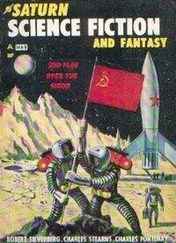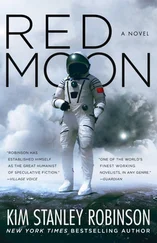It was impossible for Kaganovich not to know any of this, just as it was impossible for the delegates of the Twentieth Party Congress not to have noticed that more than 1,000 of their 1,500 predecessors from the Seventeenth Congress in 1949 had been shot. Of course Kaganovich had known. Everyone knew. Each Presidium member, Khrushchev included, had personally signed thousands of arrest and death warrants. In their speeches, they had all exhorted the security men to exceed their brutal interrogation quotas, to root out shirkers, reactionary right-leaners, and foreign spies. Molotov, in his memoirs, even justified arresting the wives and children of enemies of the people: “They had to be isolated…. Otherwise, of course, they would have spread all sorts of complaints and demoralization.” Molotov’s own wife fell victim to the purges, but he did not try to save her from a Siberian labor camp. Nor did Kaganovich rise to the defense of his brother, who committed suicide rather than face trial. They had had to remain silent, to be more Stalinist than Stalin himself, because betraying even the slightest hint of hesitation would have cost them their lives. “All it took was an instant,” Khrushchev recalled. “All you did was blink and the door would open and you’d find yourself in Lubyanka,” the KGB headquarters.
For the men of Stalin’s inner circle, participation in the purges had been a matter of personal survival. But now that Khrushchev had unmasked Stalin’s reign of terror, would they survive an accounting for their actions? That was the real danger of Khrushchev’s speech—not the professed knowledge of the purges but the official acknowledgment of them, as the CIA report on the secret speech underscored. “A change from violence to diplomacy and from tension to relaxation cannot but have a deep psychological impact on the people inside the communist orbit” was the analysis in Washington. “The question arises whether the leaders of the CPSU can dispense with permanent tension without at the same time undermining their monolithic dictatorship.”
For the first time, a Soviet leader had admitted that horrible crimes had been committed in the name of communism, that terror as a tool of the state was wrong. It was still too early to tell what that meant. But as the CIA predicted, there were almost certainly going to be dire consequences.
These, and other, thoughts troubled Korolev’s distracted guests. The Chief Designer would not have known what weighty matters preoccupied his visitors because he had not been privy to the secret speech. But he was intimately acquainted with its contents. He had been among the 1,548,366 people arrested in 1938, an ordeal that began, as in the case of countless others, with a knock at the door in the middle of the night and nearly always ended in death, either by outright execution or later in the camps. “He was taken to Lefortovo prison, interrogated, beaten,” a colleague of Korolev’s would later inform the biographer James Harford. “He remembered asking for a glass of water from one [guard] who handed him the glass and then hit him in the head with the water jug. He was called an enemy of the people.”
Korolev didn’t need Khrushchev to tell him how cold it could get in Kolyma, or what it was like to sleep barefoot in the snow with a broken jaw. He had not needed to be told how it felt to lose all your teeth from malnutrition. And he didn’t need to listen to a speech to know that the prosecutions had been shams. In fact, the scientist at his side during most of the Presidium visit, the propulsion expert Valentin Glushko, had provided testimony against him at his own trial, which had ended with a ten-year sentence “for crimes in the field of a new technology” and a perfunctory “Next.”
What Korolev did need from Khrushchev that day was the green light to embark on an ambitious new project. So the Chief Designer smiled his pearly denture smile at the men who had robbed years from his life and continued his lecture. The first full-scale R-2, he explained, had been field-tested in October 1950. The launch was not a success. After tinkering throughout the harsh winter, the designers attempted another series of test firings in the spring of 1951. This time it flew 390 miles—in the right direction. “Which brings us to the present,” said Korolev, gesturing toward the largest of the three missiles. “This is the R-5,” he said, tapping the rocket with a pointer, “the first Soviet strategic rocket,” built entirely by Russians without German help.
The R-5, the Presidium members could immediately see, was radically different from its predecessors. It was longer by half than the original V-2 replica, slimmer, more fragile in appearance, and tubular in shape. The four big, graceful stabilizer fins that had made the tapered V-2 instantly recognizable had been lopped back to tiny triangle wedges on the R-5, and the nose cone had been blunted into an ungainly snout.
“The construction looked utterly incapable of flight,” Sergei Khrushchev recalled, a sixty-six-foot-long pencil in need of sharpening, with an engine for a rubber eraser. “The [R-l and R-2] at least had streamlined shapes and a certain refinement in the form of stabilizers,” he would later write. “Apparently I wasn’t the only one to have this reaction, since Father looked surprised.”
Korolev, at last, had his guests’ undivided attention. Not only did the R-5 fly, he explained, but it spent most of its flight above the atmosphere. Large stabilizer fins were not necessary because of servomotors for the small aerodynamic rudders. The rocket’s tubular shell doubled as the propellant tank wall, further reducing design mass by a full ton while increasing fuel capacity by 60 percent. The engine, an RD-103 designed by Glushko, also produced 60 percent more thrust than its predecessors, and thanks to the introduction of coolant flowing through integrated solder-welded ribs around the combustion chamber, it could operate longer and more efficiently, without overheating or cracking under the intense temperatures and pressure generated by forty-four tons of thrust. Glushko’s engine propelled the R-5 to a top speed of 10,000 feet per second, or twice as fast as the V-2. A new thermal shield protected the nose cone from the excess heat generated by the increased velocity and atmospheric reentry, while targeting accuracy had been greatly improved with the addition of longitudinal acceleration integrators, which could control engine cutoff with greater precision.
Fully fueled and armed, the R-5 weighed twenty-nine tons. Its range was 1,200 kilometers, roughly 800 miles. Its payload was an eightykiloton nuclear warhead, the equivalent force of six Hiroshima bombs. And the R-5 was not a mock-up or test vehicle. It was operational. Three weeks earlier, on February 2, the missile had carried its lethal cargo 800 miles, setting off a mushroom cloud over a target area near the Aral Sea in Soviet central Asia. The test had marked the world’s first nuclear detonation delivered by a ballistic missile, the dawn of a new age in warfare. The Soviet Union had fired the first salvo of an arms race that would consume trillions of dollars and hold the planet hostage for the next forty years.
The Presidium members stared intently at their revolutionary new weapon. It seemed incomprehensible that such a strange, fragile object could wield such power; that with one push of a button it could vaporize an entire city in an instant. Khrushchev and a few of the other Presidium members had seen war, and they knew that it was incremental, a process of attrition. In the sieges of Stalingrad and Kursk, Leningrad and Kiev, the devastation had been progressive. A little bit of each city had died each day, and the process had lasted for agonizing months. With the R-5, everything would be over within seven minutes of launch. You didn’t need planes, tanks, or troops, or an invasion fleet. You didn’t need to worry about logistics or supply trains. You didn’t need to put your soldiers in harm’s way. It made war seem almost effortless.
Читать дальше












